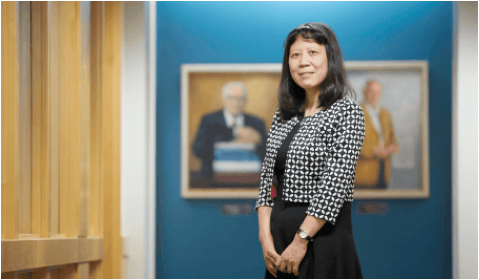Henry Pickering Walcott Professor of Biostatistics and Chair, Xihong Lin, was recently asked, “What can biostatisticians do today that they couldn’t do 10 years ago?”
Thanks to whole-genome sequencing, Xihong describes how they have gone from looking at one spot of the human genome at a time, to looking at millions of locations – still only 10 percent of the genome – to studying 3 billion base pairs.
In the old days, biostatisticians measured one exposure at a time—for example, one type of particulate matter in air pollution or heavy metal exposures such as mercury. Now they can simultaneously measure a spectrum of exposures in the environment in a person’s blood or body tissue and through satellite data.
See more of Xihong’s thoughts here.




